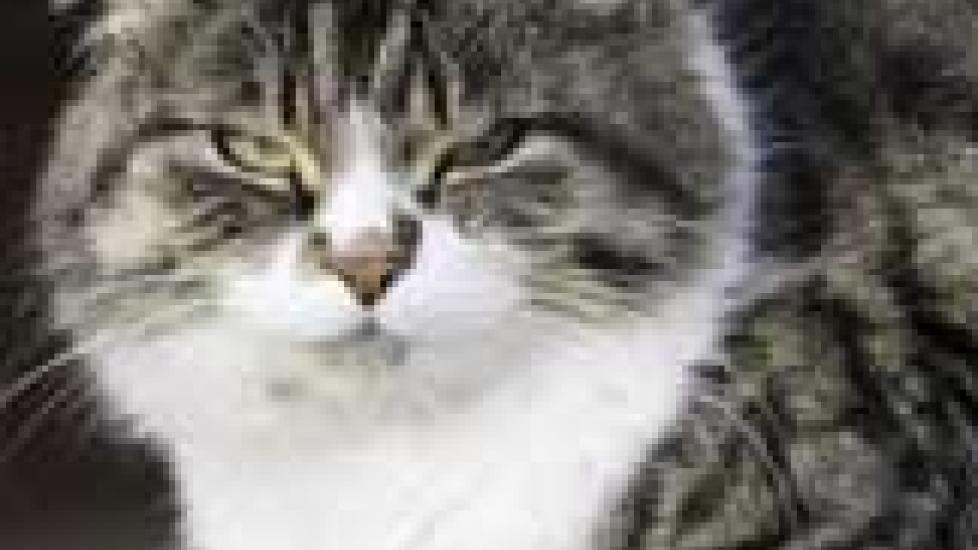Feeding Senior Cats
Just one of the great things about living with cats is that they can be around for a looonngg time. One of my favorite patients was a crotchety old kitty named Rosie. She was 25 when she finally passed after a long and quite successful battle with chronic kidney disease.
Rosie had lived with her owners ever since she was a kitten, and they didn’t seem the boastful type, so I believed them when they told me how old she was. Plus (and please don’t take this the wrong way, dearest Rosie), she looked like a 25 year old cat.
She was a calico domestic long hair, probably with a bit of Persian in there. She had a face like an Ewok, weighed about four pounds, had no teeth, and would have used a walker if she could have. I can still picture her fur sticking up every which way around her pursed little old lady face. She wasn’t pretty, but she was the queen and she reveled in it.
Dealing with old age has its challenges of course, and for the owner of a "mature" cat, providing optimum nutrition is one of them. It’s worth the effort to find a high quality food that your cat looks forward to eating, however. Providing the right balance of nutrients in your older cat’s diet is one of the best ways to maximize his well-being and longevity.
Animals with chronic health concerns (e.g., diabetes mellitus, hyperthyroidism, or kidney disease) often benefit from diets designed specifically for their needs, but what about otherwise healthy older cats?
Many respected pet food manufacturers make foods designed for feline senior citizens. The Association of American Feed Control Officials (AAFCO) does not have a specific set of nutrient requirements for older cats, so it is up to the manufacturers to design foods that support this unique stage of life. Each company goes about it a bit differently, but qualities to look for in a food include:
- High antioxidant levels (e.g., vitamins E and C) to support the immune system
- Moderate levels of protein — enough to maintain muscle mass while avoiding an excess that could worsen preexisting kidney disease
- Low levels of phosphorus to protect the kidneys
- Excellent palatability and smell to stimulate the appetite
- High quality ingredients for ease of digestibility and to reduce the formation of potentially damaging metabolic byproducts
- Carnitine to maintain muscle mass
- Fish oils and other sources of essential fatty acids to counteract the effects of brain aging and promote healthy skin and joint health
There is no hard and fast rule as to when to make the switch to a food specifically designed for older cats. In fact, since cats can live so long, some pet food manufacturers have divided up these later years into what essentially is a feline version of middle age followed by the "golden years" and have designed separate foods for each age range.
I tend to think of middle age as starting when a cat has reached half its expected lifespan, and a cat to be a senior citizen at 75 percent of its life expectancy. This comes out to around 7 years and 11 years of age respectively, but your veterinarian can help you determine when switching to a senior food would be in your cat’s best interests.

Dr. Jennifer Coates
Image: Polianskyi Igor / via Shutterstock
